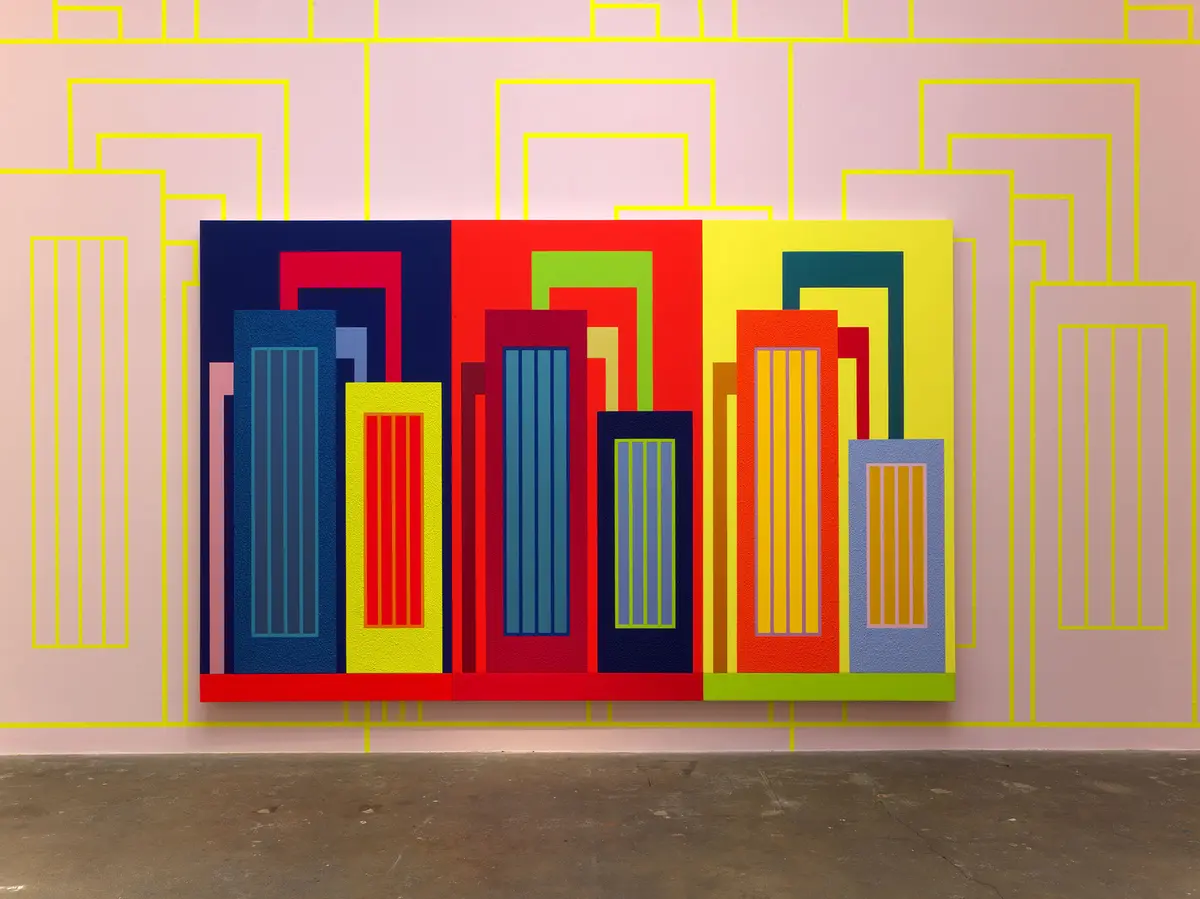We use cookies and other technologies to personalize your experience and collect analytics.
Peter Halley
Peter Halley
1 June – 1 July 2007
Press release

Stuart Shave/Modern Art in association with Waddington Galleries is pleased to present a new installation by American artist Peter Halley.
Halley’s early canvases utilised a pure colour palate with the formal, isolated components favoured by the colour field painters of the Sixties such as Frank
Stella, combining them with a Duchamp-ian use of appropriation. Halley’s precisely defined blocks of bright colour, metallics and textured paint, intersected by vertical bars of contrasting tones, mimicked the confines of the prison cell and the grid-like architecture that lined the streets of perpetually modernised city living. The bold lines that flow through and around these shapes conduct an inferred energy from one cell to another, carrying with them an allusion to the language of electrodynamics. In this way many of Halley’s works incorporate two conduit lines linking each cell; suggesting a circuitry of inflow and outflow.
The Panopticon prison designed in 1791 by Jeremy Bentham and subsequently critiqued by Michel Foucault’s 1977 essay, Discipline & Punish, became the model through which Halley and some of his contemporaries identified the perceived ‘hyper-reality’ of the era. Observed and monitored from a central column, the prisoners of the Panoptic prison cell could not escape the perpetual surveillance of their sentence. The image of this continually supervised existence was seen as a microcosm of the way in which newly developed information technology allowed the daily acts of living to be recorded, processed and reduced into quantifiable and chartable functions. Mapped out and fed into the non-space of the computer and used for the analysis of humanity itself, these statistics began to question what
actually constituted lived reality. In this epoch of the digital, the technological refinement of man’s physical environment gave rise to the geometricisation of social living.
Halley would later move to a more vibrant schema of neon colours and in 1994 began to incorporate the computer as a compositional tool. With the use of digital media Halley’s paintings became increasingly intricate. Halley’s more recent paintings and installations explore what the artist terms a ‘hallucinated hyper-determined panopticality’. These installations have included large-scale paintings consisting of several canvases, which are hung on top of digital prints wallpapered directly onto gallery walls; creating environments saturated in colour and repeated pattern. The purposely-created installation exhibited here at Modern Art, dominates the main exhibition space with this same dramatic effect.
Peter Halley (b.1953) received his BA from Yale University, New Haven in1975 and an MFA from the University of New Orleans in 1978, he moved to New York in the 1980’s. Halley was influenced by Jean Baudrillard and would go on to write texts exploring and expanding on the French cultural theorist’s essays on notions of the
Simulacra. Halley’s writings became the ideological underpinning to the Neo-
Geometric Conceptualist group to which he belonged with Ashley Bickerton and Jeff
Koons, among others. His essays have now been collated into two books of collected writings. Halley also published Index Magazine from his home in New York between 1996 and 2005 and is now Director of Graduate Studies in Painting and Printmaking at Yale. He continues to write and annually exhibits new work.